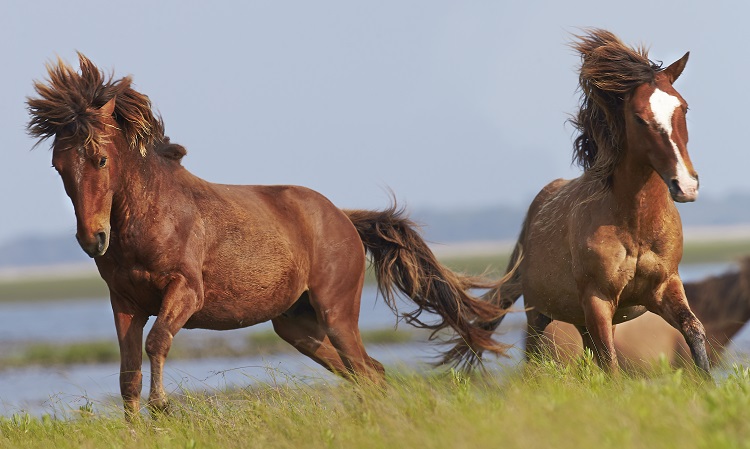Originally published on April 5, 2023, this article has been updated on October 11, 2023 to reflect the latest research and statistics. Our editorial team has ensured you’re viewing the most current data on this topic. Need help or have a question? Email us.
I absolutely love horses! My horse journey has been the light of my life, and I know many feel the same way about their horses. With horses being such popular pets and performance animals, I wondered: How many horses are there worldwide? I decided to find out.
There are many horses in the world, ranging in size, breed, and location. In some countries, horses enjoy a protected status as pets, while other countries see horses as livestock, which means horses can legally be slaughtered in those countries for meat.
The horse world is much larger than I had ever imagined, and I was also astonished by the number of countries with millions of horses, whether domestic or wild horses.
Here are a few facts that I found most interesting about the horses of the world.
Top 8 Most Intriguing Stats
- The Number of Horses Worldwide Is Almost 60 Million
- There Are Almost 6.6 Million Horses in the US
- The State With the Highest Number of Horse Population Is Texas
- There Are 73,520 Wild Horses and Burros Across 10 Western States in the US
- The Number of Recognized Horse Breeds in the US Is 350
- According to Stats of 2022, Almost 429761 Horses Live in the UK
- In European Union, Romania Has the Highest Horse Population of 447,800
- Horses Have Exceptional 360-Degree Vision
How Many Horses Are in the World?
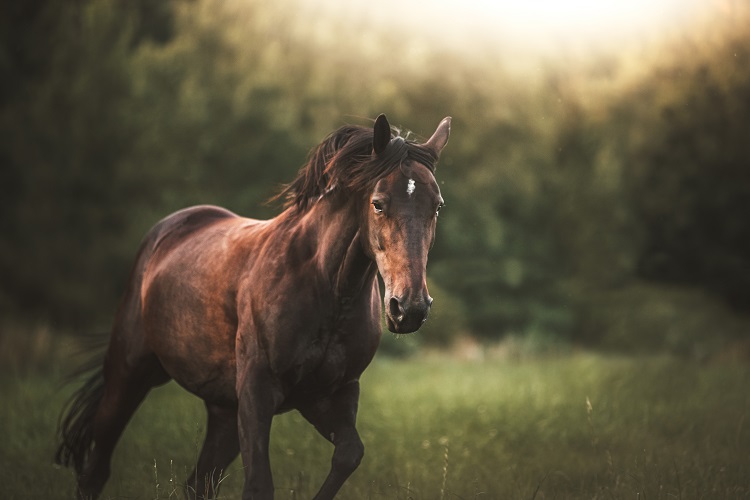
To start, I wanted a general idea of just how many horses are in the world, and it was a surprising figure of roughly 60 million horses. I say “roughly” because horses aren’t always reported or tracked like other livestock animals.
Wild horses are also not fully accounted for in all parts of the world.
The Number of Horses Worldwide Is Approximately 60 Million (WorldMapper)
World Mapper records that there are approximately 60 million horses in the world, with a sixth of that population living in the US. I was amazed when I realized my beloved ponies and all other horses in the world descended from the ancient Przewalski Horse.
Mule animals are distant cousins of the horse, and today, these equids are still used for trail riding, carrying packs, and more.
According to the Latest Stats of 2022, Almost 429761 Horses Live in the UK (FAO)
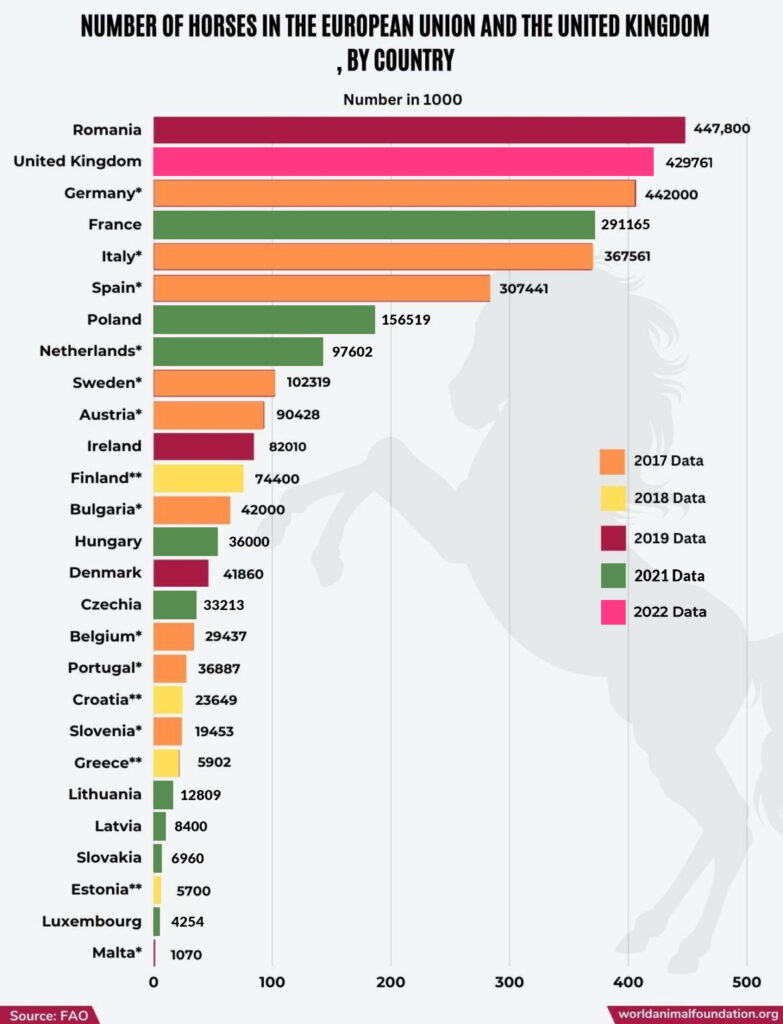
The UK has a substantial equestrian fraternity, with competitive and non-competitive riders owning horses, which increases the horse population significantly.
According to the Food and Agriculture Organization of the UN (FAO), there were 424,036 horses living in the UK in 2019, and their number in 2020 increased to 427,906. However, it is also reported that the number of horse population in 2021 has declined to 406,322. According to the Latest Stats of 2022, Almost 429761 Horses Live in the UK.
The number of horses in the UK fluctuates each year due to various factors such as breeding, sales, and changes in ownership.
In Britain, horses are still used extensively, and the average horse-to-people ratio is 1 horse for every 165 people, while there are approximately 14,000 horses in training for racing in the UK.
In the European Union, Romania Has the Highest Horse Population of 447,800 (FAO)
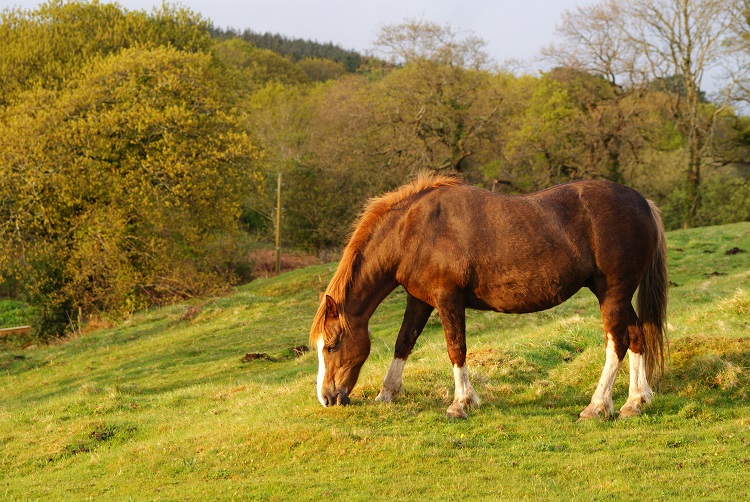
While the United Kingdom has many horses for such a small country, Romania also boasts a 447,800 thousand-strong horse population (FAO)—the most horses out of all the European countries in the European Union.
Of course, the exact number of horses continues to grow and fluctuate, and the cost of keeping horses affects breeding and veterinary care. In Romania, horses are still used in agriculture and for travel.
Before WWI, Romania had almost 2 million horses, indicating how the horse population was affected by war and conflict.
In Economy, the UK Equestrian Industry Is Responsible for Contributing Approximately £8 Billion Annually (Equine Business Association)
I know keeping horses is akin to taking a vow of poverty for most of us. Still, there is also a lot of money to be made in the different horse industries, such as horse racing (which contributed £3.45 billion to the economy), steeple racing, eventing, and other equestrian sports and leisure activities like carriage rides.
In the UK alone, the market share of equestrian revenue was £8 billion annually, with 85,000 people working full-time in the industry, according to the Equine Business Association.
The Island of Grenada Has Just 30 Horses (FAO)
While horses are prolific in most countries of the world, the Island of Grenada has a horse population of only 30 horses. Most of these horses are owned by tourist facilities that use the horses for island riding.
How Many Horses Are in the US?
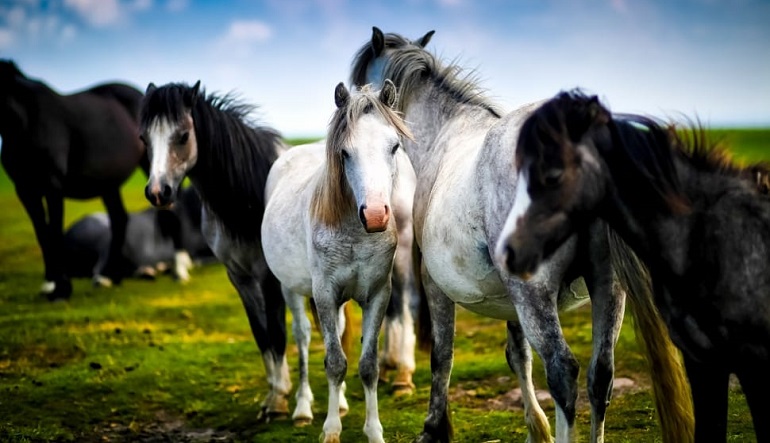
The land of the cowboy, the US, has a very long history with horses. I was curious about just how much a percentage of the economy and population interacted with horses today. The statistics didn’t disappoint me at all.
According to the Latest Stats of 2023, There Are Almost 6.6 Million Horses in the US (American Horse Council)
In 2016-17, the population of horses in the US reached 7.2 million horses (both domesticated horses and wild horses). On reflection, I wasn’t surprised, though. But the 2022 stats of FAO revealed there were 10.7 million horses in 2021 and 10.31 million horses in 2022 in the US.
However, according to the American Horse Council, the total horse population has slightly decreased, dropping from 7.2 million in 2017 to 6.6 million in 2023.
In 2007, the US began to ban the slaughter of horses on American shores, and fewer horses were sent to slaughter abroad too.
This meant that people became more cautious about breeding horses for slaughter, and unwanted horses and foals were now rehomed via different rescue networks.
The State With the Highest Number in Horse Population (748,829 ) Is Texas (Agri Life Today)
The most recent data shows Texas has a horse population of 748,829. Previously, the American Horse Council found in 2017 that Texas was still the top horse state, with a horse population of 767,100 horses.
Next, California rocked in with a 534,500-strong horse population. Florida came in a surprising third place with 387,300 horses.
With the massive racing industry, the equine population employs 1.7 million people involved in training, transportation, and many other essential roles.
Such a large and thriving horse population with its related caretakers, veterinarians, trainers, and riders contributes over 122 billion dollars of revenue to the US bottom line.
There Are 73,520 Wild Horses and Burros Across 10 Western States in the US (BLM)
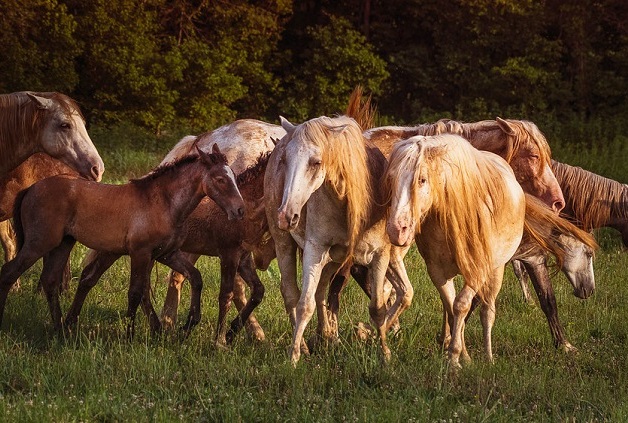
I have had the absolute pleasure of going on a holiday to view the wild herds of the US, Canada, and even some parts of Mexico, and I can promise you, there’s nothing better.
As of 2024, the United States (in 10 Western states) boasts a wild horse population of 73,520 horses (58,952 wild horses and 14,568 burros), many of which are managed by the Bureau of Land Management in care facilities, as the wild horse population can double in size if left unchecked.
The 2019 number of wild horses also didn’t include the foal crop, which added another 14,000-18,000 horses.
Of course, to be entirely accurate, these horses can rather be considered feral horses since they are not truly wild horses that have never had any interaction with man.
Most of these horses are descended from domesticated horses, which is why they are a mix of other breeds (like popular breeds in the US), such as the Appaloosa, quarter horse, American paint horse, and even some Arabian horses were thrown in.
The reality of horse slaughter can’t be overlooked, and many wild horses in the US have been sent to slaughter over the last hundred years. The battle to protect our equines is still not over, so get involved and support a ban on horse meat.
The Most Popular US Horse Breeds Are Thoroughbreds and Quarter Horses (Horse Racing Sense)
Like most countries, Americans have their own “darling” breeds that are popular choices for leisure, racing, equestrian sports, and more.
Horse Racing Sense reported the following breeds to be the most popular breeds in the US: Thoroughbreds, the American quarter horses, the Morgan horse, Mustangs, Tennessee Walkers, and the Arabian horse.
There are More Than 350 Horse Breeds in the World, 10 Recognized by US Equestrian (USEF)
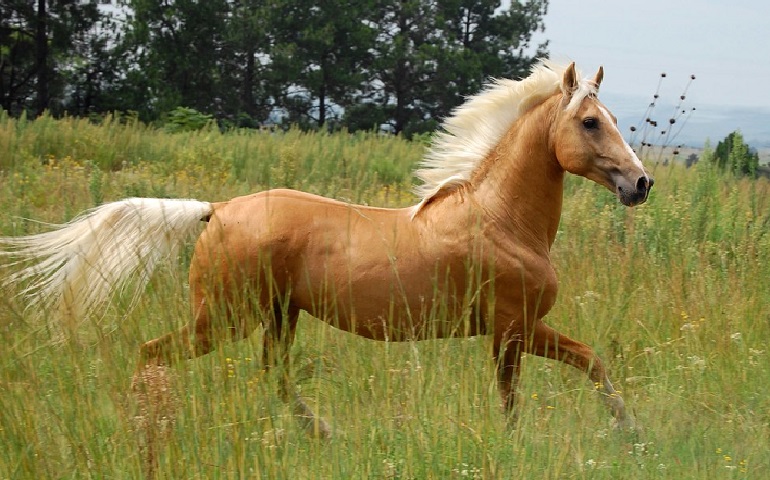
There are 350 plus equine breeds, and equine experts recognize about 10 different horse breeds in the US, but the United Nations Food and Agriculture Database, concluded a study finding that there are 784 horse breeds reported in the world, with more than half of these breeds originating in the European Union.
Almost 11.5 percent of the world’s horse breeds have become extinct, while 22.6 percent are considered “at risk.”
Interesting Facts About Horses
Horses are absolutely fascinating. They come in all sizes and shapes. I adore the heavy horses used to pull carts and offer carriage rides, but I also love riding light horses like thoroughbred horses and Arabian horses.
Aside from their size and selective breeding, I want to share many other amazing facts about horses.
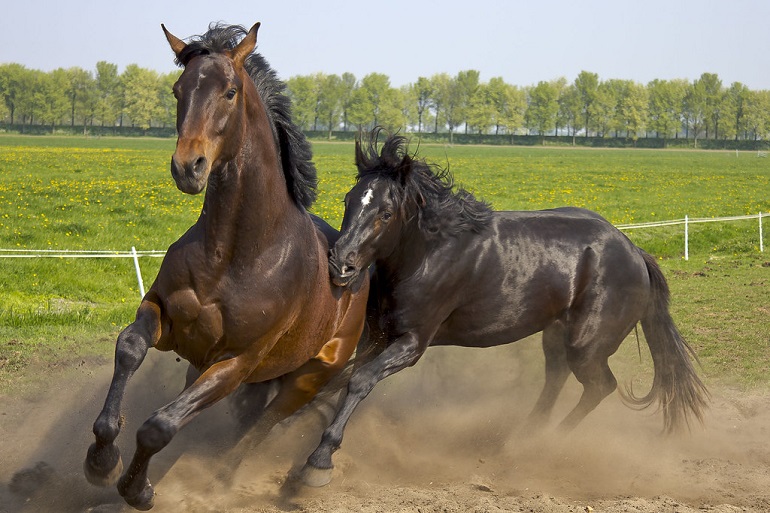
The Size of Horse Can Be As Small as 76 cm in Height and As Tall as 175 cm (and Above) at Shoulder Height (Live Science)
Live Science shared some fascinating facts about horses, such as that horses range in height from 76 centimeters (less than 10 hands) to over 175 centimeters (more than 17 hands) when measured from their shoulder or top of the wither to the ground.
According to the Guinness World Records, the world’s smallest horse is a miniature horse called Thumbelina, which measures 43 centimeters or 17 inches in height. While fully grown, this pint-size pony doesn’t even reach past a man’s knee.
The tallest horse was Big Jake, a Belgian gelding (a draft horse) that measured 20 hands and 2.75 inches in height, according to the World Guinness Records.
The Weight Range of Average Adult Horses Is 900 to 1200 Pounds (Horsey Hooves)
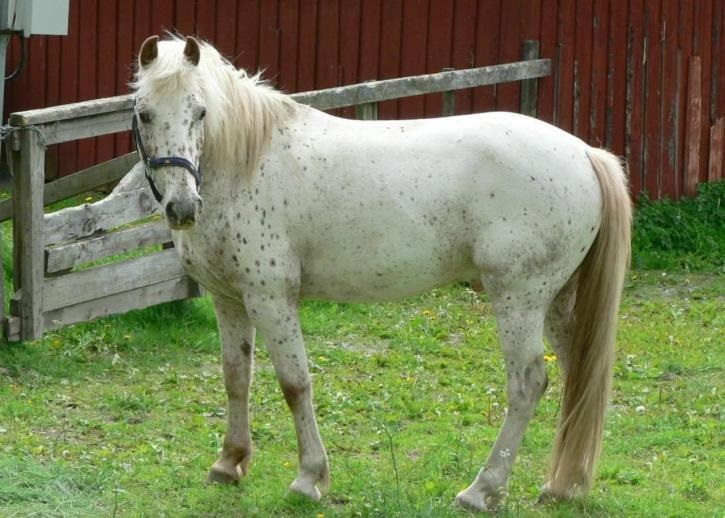
From tiny horses to huge draft horses, there is a massive variation in what a horse can weigh. My own ponies weigh over 900 pounds each, with larger draft breeds weighing over a ton, while other horses fit in the middle.
Draft horses weigh a massive amount, and while they won’t be winning any races soon, they are magnificently strong beasts that can haul timber out of mountainous areas and pull heavy loads over rough terrain.
With Lightning-Fast Reflexes, Horses Can Go From Standing Still to Kicking You Within Just 0.3 Seconds (BC SPCA)
When I accidentally touch a hot stove plate, it may take me as much as 1.63 seconds to react (which is the average human reaction time), but horses can go from standing to kicking out in 0.3 seconds.
Horses Have Exceptional 360-Degree Vision (BC SPCA)
Since horses are flight animals and prey animals, they need excellent hearing, vision, and smell. A horse has nearly 360-degree vision thanks to the lateral placement of their eyes (their eyes are at the sides of their faces).
However, this placement of eyes has a downside, and horses have blind spots directly ahead of them and behind them.
Walking up behind a horse is a bad idea as they can’t see you and may kick at you. Their front blind spot is also part of the reason why horses may suddenly get a fright at something directly ahead of them.
A horse’s vision forms a considerable part of their proprioception system. This is the almost sixth sense horses have that allows them to know exactly where they place their hooves without falling over rough terrain.
The Grazing Time for Horses Is 17 Hours per Day (Kentucky Equine Research)
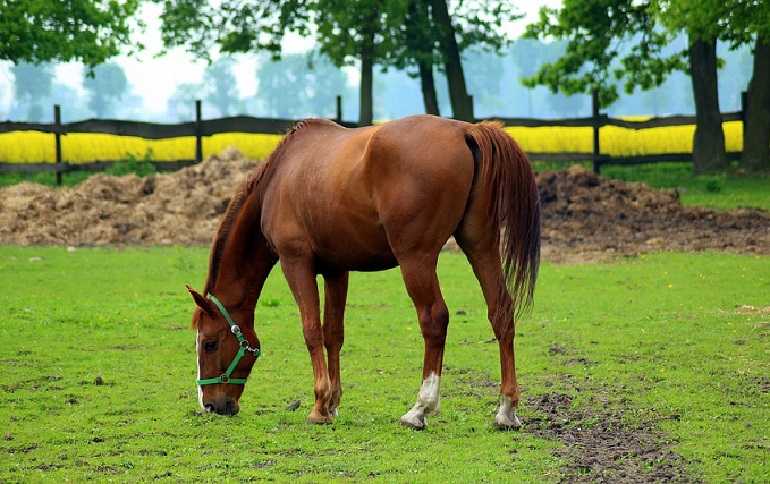
My vet always shares the importance of allowing a horse-free space to graze for most of the day. Horses should be allowed at least 17 hours of turn-out daily to ensure the horse has sufficient roughage and hay.
Horses are trickle feeders, which means they should graze most of the day, at least 17 hours of nibbling at grazing and hay to ensure a steady supply of natural fiber in the horse’s gut.
Horses Can Consume Approx. 5 L / 100 kg of Body Weight of Water a Day (The Horse)
A fixed rule among horse owners is that every horse requires an average of 38 liters or 5-10 gallons of water daily. Horses dehydrate very easily, which can have serious consequences for their health.
So, if a horse needs 5 liters of water per 100 kilograms of body weight, they will need between 20 and 25 liters of water if they weigh 400-450 kilograms. Most horses weigh over 500 kilograms, so they will require more than 30 liters of water daily.
There Are 205 Bones in a Horse Skeleton (Swan Training)
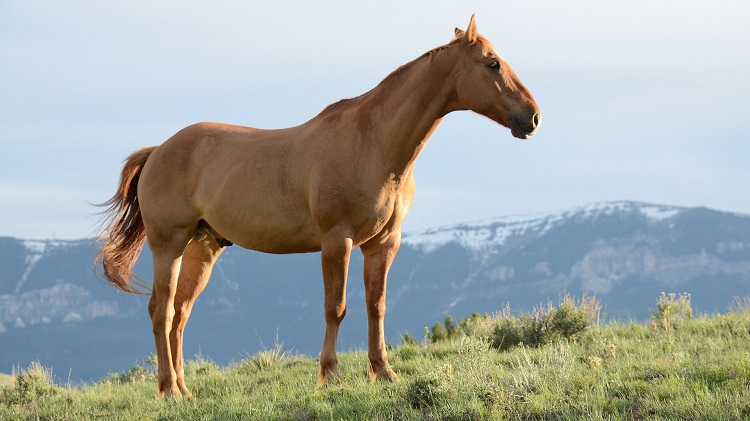
While horses are much bigger than humans, they have fewer bones in their skeletons than humans. A human has 206 bones in their body, but a horse has fewer bones at 205 bones in the horse’s body.
It Is Predicted That the Earliest Horse Ancestor Lived Approximately 55 Million Years Ago (BC SPCA)
Horses share a common ancestor with the Prezwalski Horse, which first appeared about 55 million years ago. The more recent ancestors of horses like yours and mine were domesticated around 6,000 years ago.
The ancient ancestor of horses more closely resembled the Prezwalski Horse, which is still alive today, and it was the size of a Labrador retriever and moved somewhat differently to modern-day horses since it had finger-like hooves.
FAQs
How Many Different Types of Horses Are There?
Horses come in different sizes, breeds, and genders. Mares, foals, stallions, and geldings make up the gendering of horses, from miniature horses up to ponies (up to 14.2 hands in height) and, finally, full-size horses (from 14.3 hands to as much as 20 hands).
How Many Feral Horses Are There in the World?
A feral horse is a horse that descends from domesticated horses that were released into the wilds, where it has lived without human contact since birth. Commonly called wild horses, feral horses are not easily tracked, so an accurate number for the global population is hard to estimate.
However, there are more than 90,000 wild horses in the US and as many as 400,000 wild horses in Australia, while Europe also boasts large groups of wild horses in Poland, England, and the Camargue wetlands of France.
How Do Horses Eat?
Horses eat by nibbling food with their front teeth and then grinding the grass with their back molars. Once the food is fine enough and properly masticated or mixed with enzyme-rich saliva, they swallow the food, which travels down a very long esophagus to their stomach sphincter.
Because the esophagus is so long, a horse cannot regurgitate food from their stomach or vomit, which is why they often develop colic since they can’t purge their stomachs if they are upset.
How Fast Can a Horse Run?
Horses are speedy animals. And I can testify to the thrill of being on a horse at full speed in a flat-out gallop. But few people realize just how fast a horse can run.
The fastest horse ever clocked (or measured) over a long distance is a thoroughbred called Winning Brew, measured at 43.97 miles per hour.
However, this is not the world’s fastest horse. According to Horse Racing Sense, that title belongs to the American quarter horse, which can run a quarter mile or 440 yards at 55 miles per hour.
Do Horses Sleep Standing Up?
Horses can sleep in a standing position without falling. This unique ability is thanks to a complex mechanism of muscles and tendons known as their stay apparatus, which locks the horse’s legs into place, preventing the horse from falling over.
However, for genuinely relaxing sleep, horses require time, space, and safety to lie down and enjoy some REM (rapid eye movement) or dream sleep.
Wrap Up
My love for the horses of this world will never fade, and whether you’ve never been near a horse or have shared your life with these incredible animals, there is no way that our world would ever be the same without the thunder of hooves across the empty plains or up cobbled roads in Europe.
The horse industry is a massive contributor to the economies of many countries via racing, equestrian sports, and leisure activities. Yet, we have an essential role in ensuring the horse industry also protects these majestic animals.
To ensure that horseback riding remains something we can all enjoy, we need to support organizations that regulate horse sport, care, and rights.


